Hiking The Dunes at Great Sand Dunes National Park - By Lisa Ballard
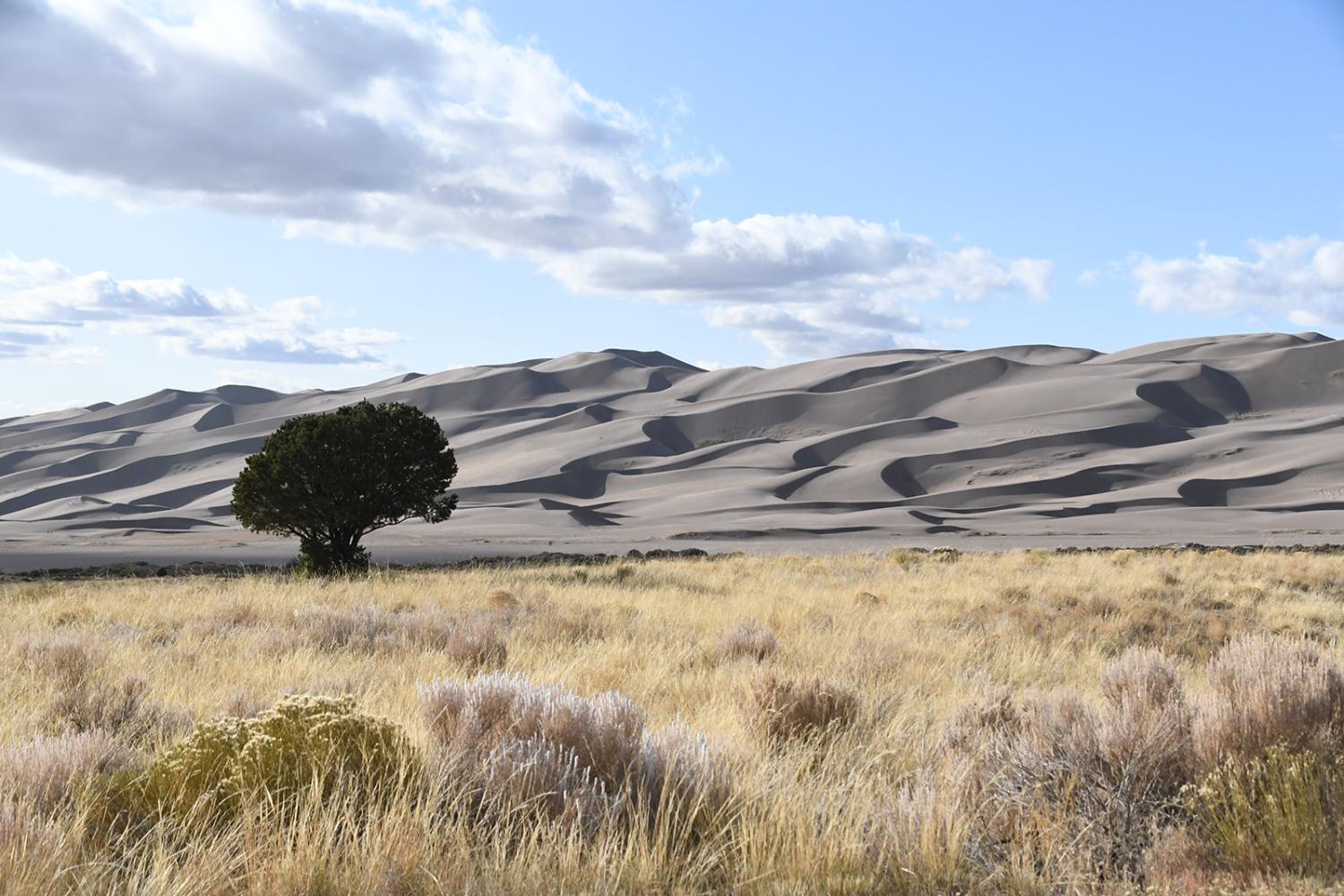
Last October, I had the chance to visit Great Sand Dunes National Park, the geological phenomenon wedged between the San Luis Valley and the Sangre de Cristo Mountains in Colorado.
At the entrance to the main dunefield, I excitedly laced up my Lowa Innox Pro GTX Mid’s, anticipating a hike to the top of Star Dune (8,617 feet), the tallest dune in the park and thus the tallest dune in North America.
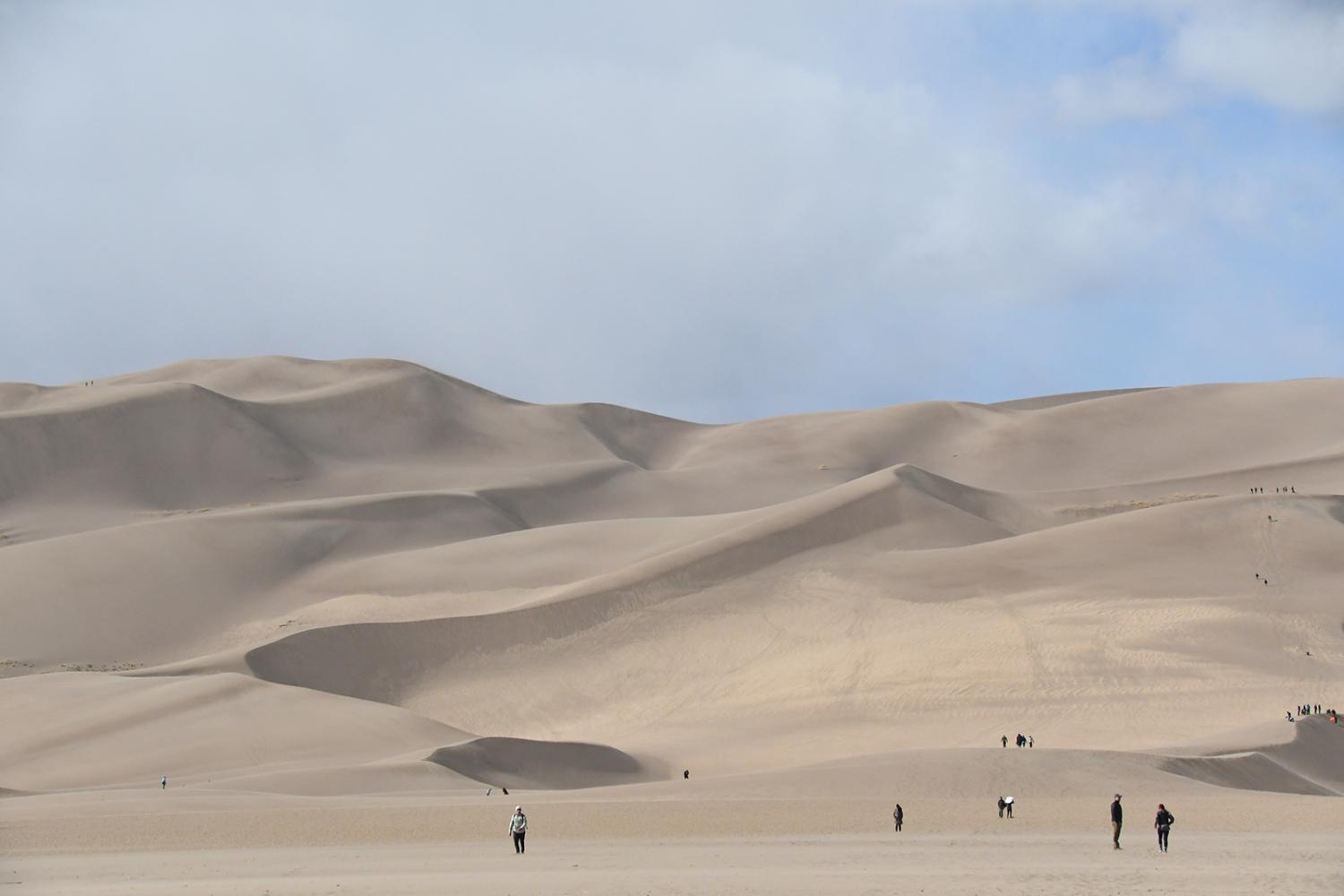
The dunefield spreads across 30 square miles. It’s a place of extremes.
During the summer, temperatures of 150 degrees (F) bake the sand. During the winter, that same spot might be minus 20.
On my dune-climbing day, it was chilly, in the 30’s, and the wind howled.
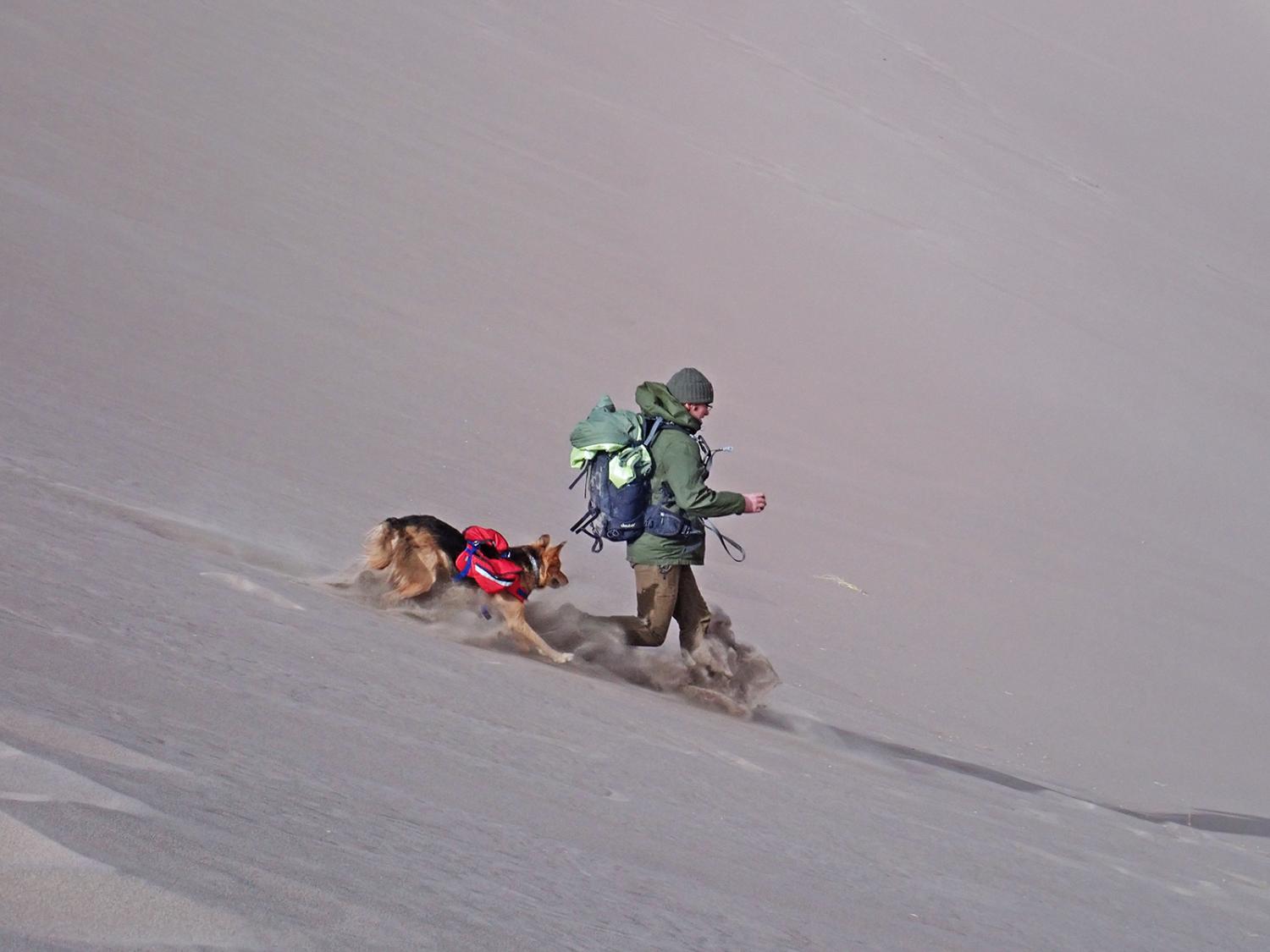
Wind is a key part of the dune ecosystem. The prevailing winds from the southwest carry sand from as far away as the San Juan Mountains (65 miles) into the wall of the Sangre de Cristo’s. As northeasterly winds blast through the mountain passes, the sediment piles back on itself and then gets washed back onto the arid plain with the spring snowmelt. It’s a cycle that has repeated itself for over 400,000 years.
As I stepped onto the pale, talc-like surface of the dunefield, the wind nearly knocked me off my feet.
I zipped up my collar to prevent my cheeks from getting sandblasted, then put a shoulder into the wind. It was tough going. The fine grains gave way under each step. The first quarter mile was pancake flat, then the climb began. Though the climb sounded modest, 3.8 miles and about 755 feet of vertical gain, it felt three times higher due to the loose footing.
Luckily there was entertainment along the way.
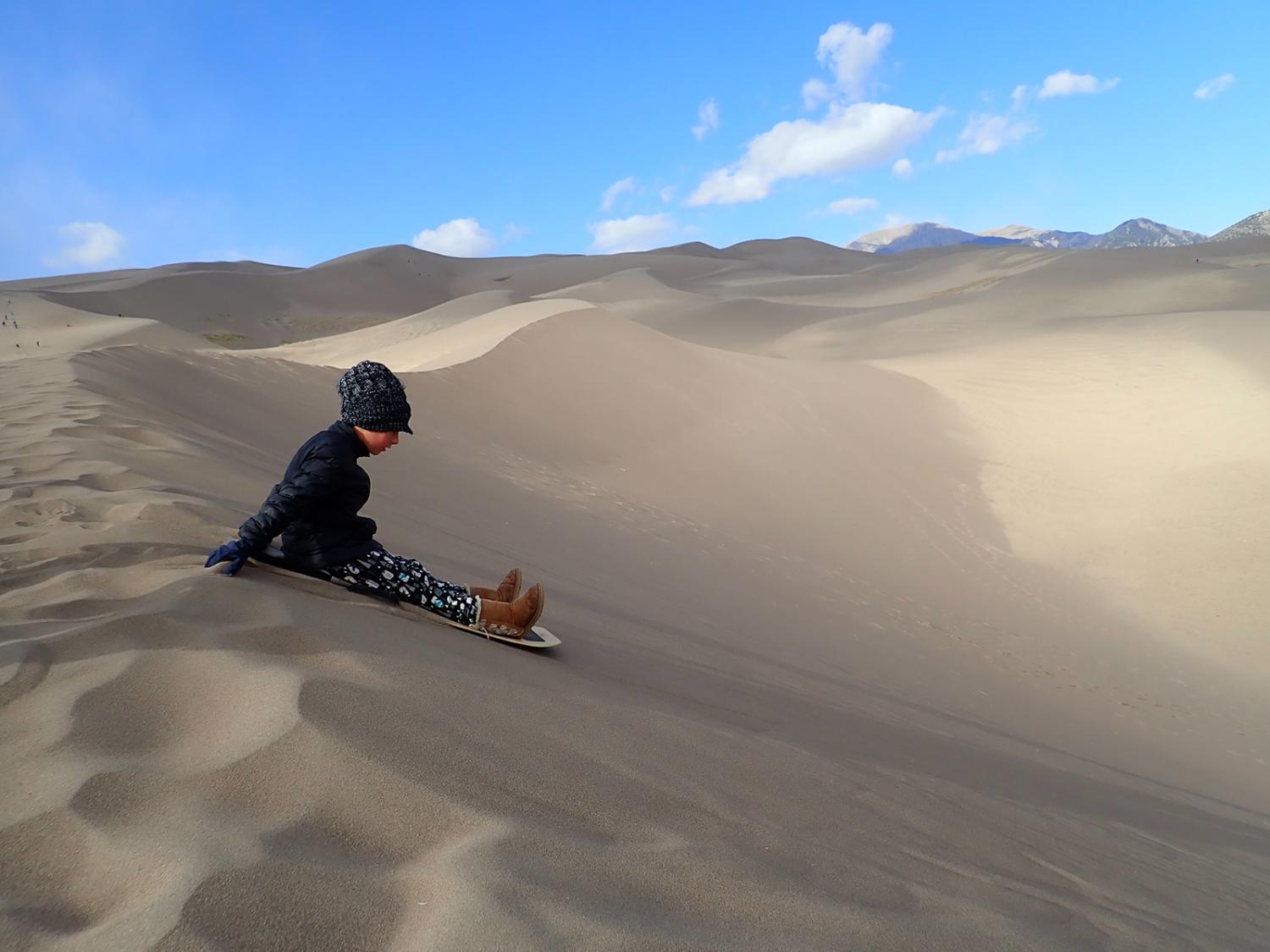
Much like a snowy slope, some people sledded down the dunes while others stood on snowboard like boards without bindings.
I watched one gal face plant, as her friends laughed from the launching point. “Want to try?” asked one of the onlookers offering me a “sandboard.”
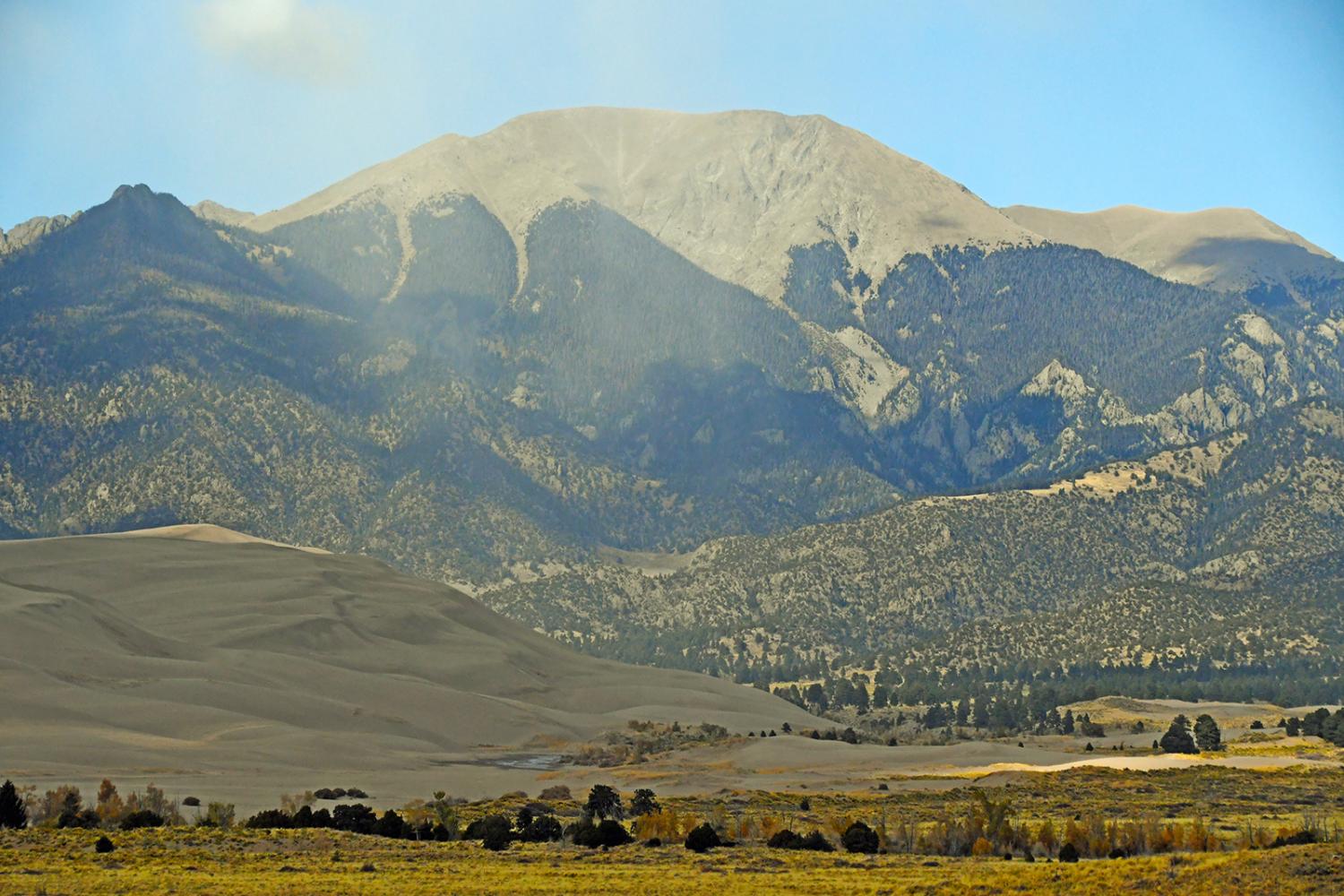
I declined, continuing my climb. When I finally reached the top, I marveled at the waves of sand that flowed around me, framed by the rock face of Mount Herard, a 13,000-footer at the northwestern edge of the dunefield.
Then I boot-skied down.
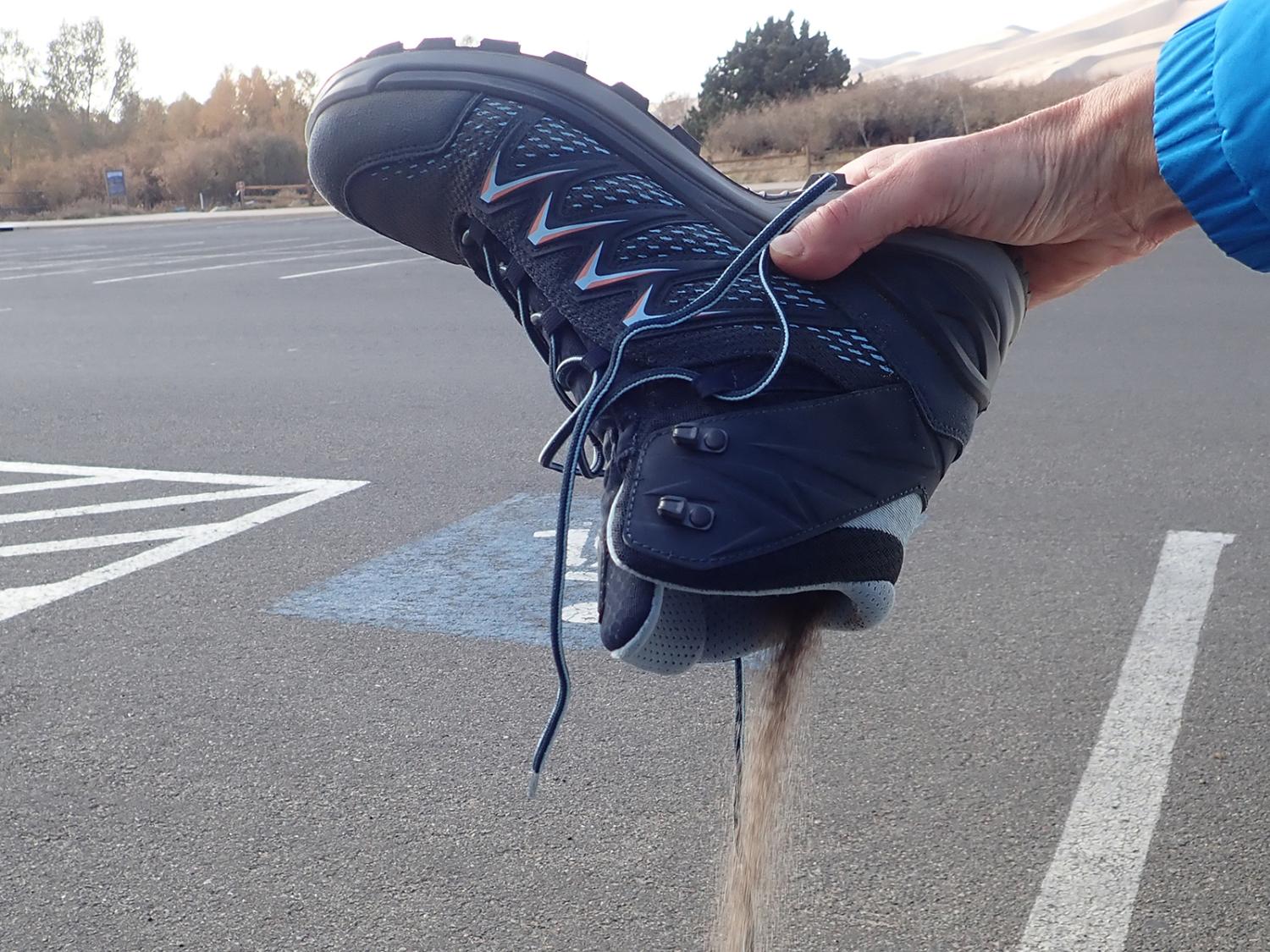
The dunefield contains over 5 billion cubic feet of sand.
About half of that poured out of my Lowa’s back at my car, but what a unique hike!